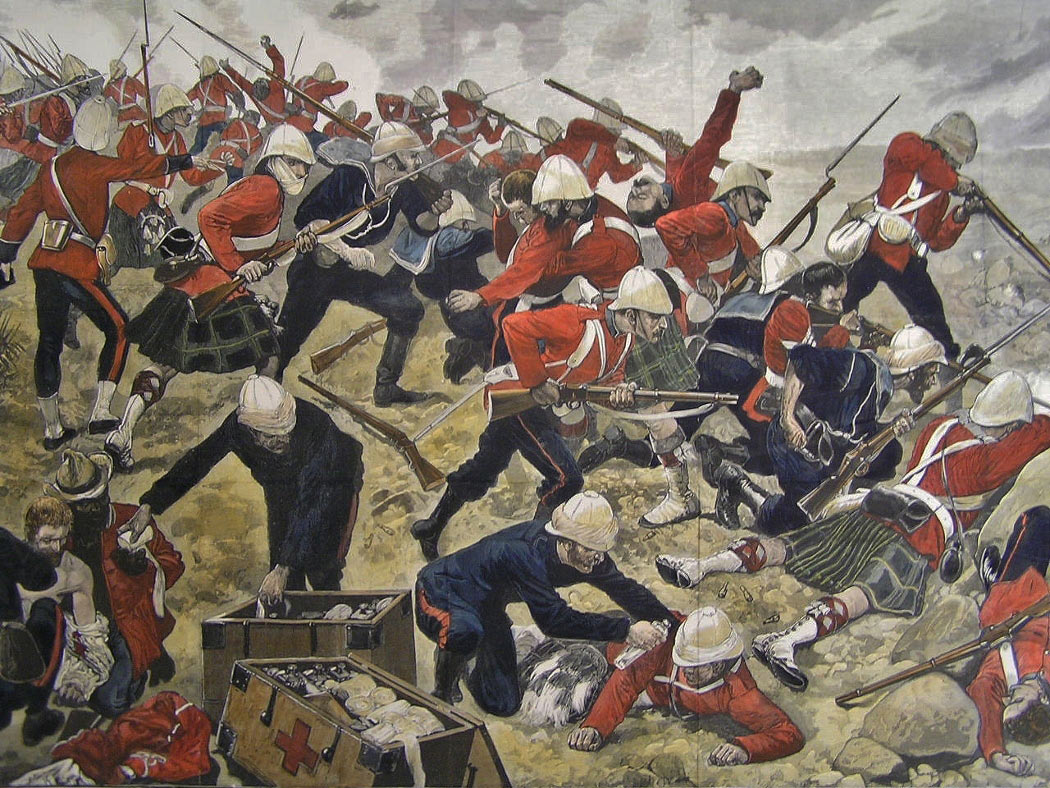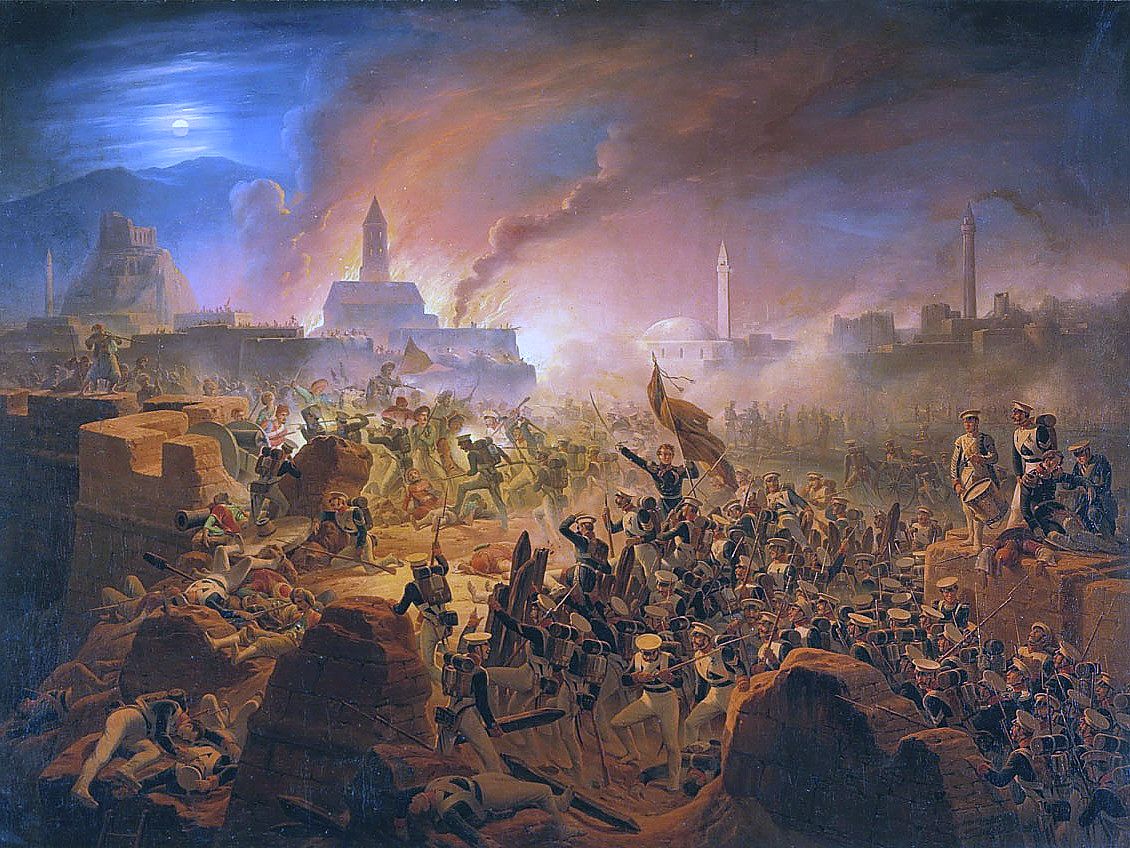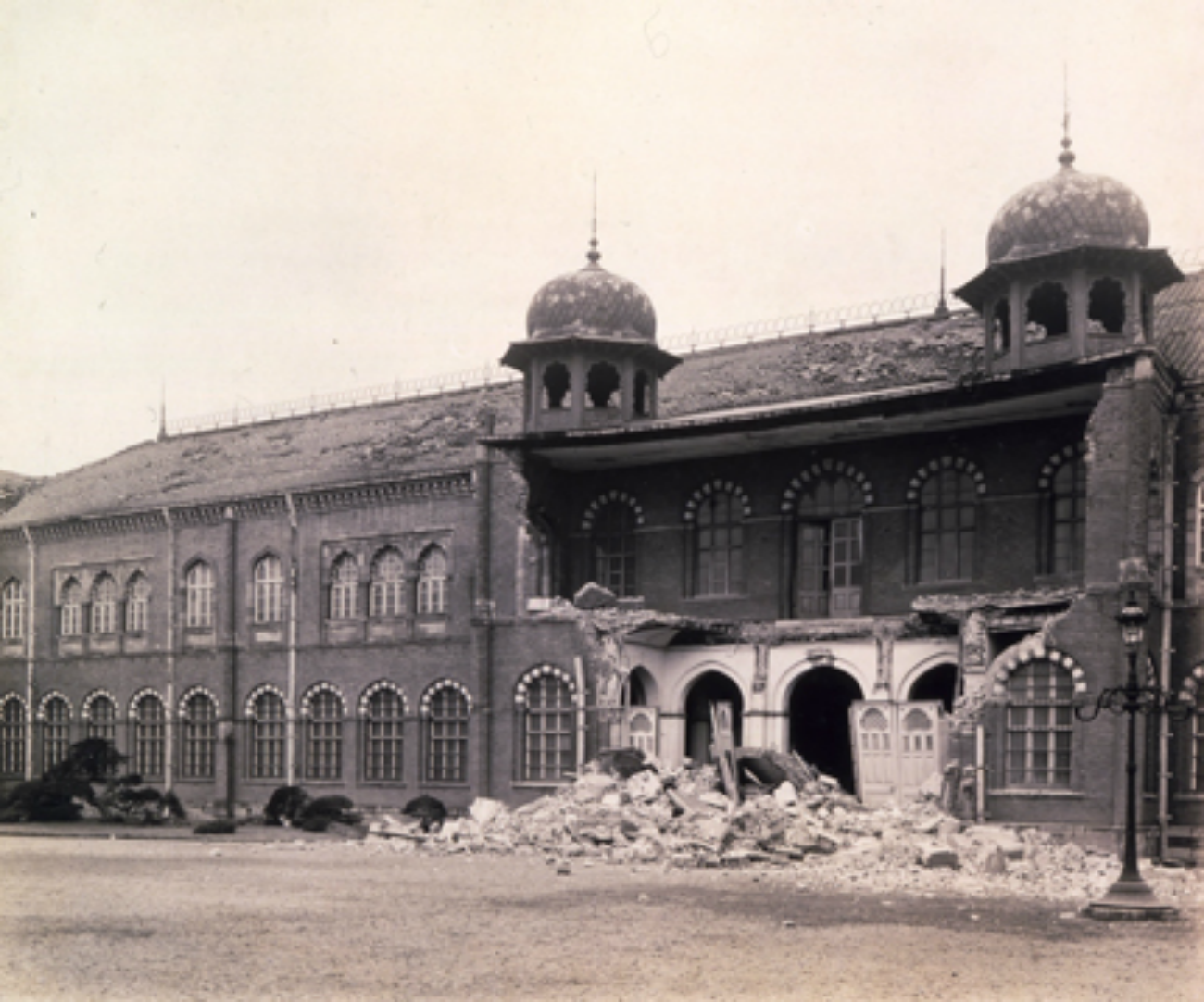|
Kawakami Tōgai
Kawakami Tōgai, originally Hiroshi (Japanese:川上 冬崖; 22 July 1828, Nagano Prefecture - 3 May 1881, Atami) was a Japanese painter; one of the first to work in the yōga (Western) style. Life and work His birth name was Yamagishi Mannojō, but was later adopted by the Kawakamis; a family of the minor nobility. As a young man, he went to Edo (Tokyo) and studied painting with , a follower of the Shijō school. He then found work at the Bansho Shirabesho (roughly; Institute for the Study of Barbarian Books) where he translated books in Dutch that dealt with Western-style painting. He was still employed there in 1862 when it was renamed the Yōsho Shirabesho (Institute for the Study of Western books). After the Meiji Restoration in 1868, he worked at the "South Department" of the Tokyo Daigakkō, which would eventually become the University of Tokyo. He also worked for the Ministry of Culture and the Imperial Japanese Navy General Staff, where he did drafting and made ch ... [...More Info...] [...Related Items...] OR: [Wikipedia] [Google] [Baidu] |
Koyama Shōtarō
Koyama Shōtarō (Japanese:小山 正太郎; 15 February 1857, Nagaoka - 7 January 1916, Tokyo) was a Japanese painter. He was one of the first to work in the ''yōga'' style. Life and work His father was an acupuncturist. He completed his primary education at the British School in Tokyo. His began his artistic education at a private school in Tokyo operated by Kawakami Tōgai, then took lessons at the Technical Fine Arts School (now the Tokyo Institute of Technology), operated by the Ministry of Industry. There, he came under the influence of the Italian artist, Antonio Fontanesi, head of the painting classes, who was instrumental in introducing Western style painting to Japan. During his military service, he also studied watercolor painting with the French artist, under the auspices of the Ministry of the Army. Two of his younger brothers pursued military careers. When Fontanesi returned to Italy in 1878, Koyama was dissatisfied with his replacement and left the school. To ... [...More Info...] [...Related Items...] OR: [Wikipedia] [Google] [Baidu] |
Artists From Nagano Prefecture
An artist is a person engaged in an activity related to creating art, practicing the arts, or demonstrating the work of art. The most common usage (in both everyday speech and academic discourse) refers to a practitioner in the visual arts only. However, the term is also often used in the entertainment business to refer to actors, musicians, singers, dancers and other performers, in which they are known as ''Artiste'' instead. ''Artiste'' (French) is a variant used in English in this context, but this use has become rare. The use of the term "artist" to describe writers is valid, but less common, and mostly restricted to contexts such as critics' reviews; "author" is generally used instead. Dictionary definitions The ''Oxford English Dictionary'' defines the older, broader meanings of the word "artist": * A learned person or Master of Arts * One who pursues a practical science, traditionally medicine, astrology, alchemy, chemistry * A follower of a pursuit in which skill co ... [...More Info...] [...Related Items...] OR: [Wikipedia] [Google] [Baidu] |
Yōga Painters
is a style of artistic painting in Japan, typically of Japanese subjects, themes, or landscapes, but using Western (European) artistic conventions, techniques, and materials. The term was coined in the Meiji period (1868–1912) to distinguish Western-influenced artwork from indigenous, or more traditional Japanese paintings, or . History Early works European painting was introduced to Japan during the late Muromachi period along with Christian missionaries from Portugal in 1543. Early religious works by Japanese artists in imitation of works brought by the missionaries can be considered some of the earliest forms of ''Yōga''. However, the policy of national seclusion introduced by the Tokugawa bakufu in the Edo period effectively ended the influence of western art on Japanese painting, with the exception of the use of perspective, which was discovered by Japanese artists in sketches found in European medical and scientific texts imported from the Dutch via Nagasaki. ... [...More Info...] [...Related Items...] OR: [Wikipedia] [Google] [Baidu] |
Japanese Painters
Japanese may refer to: * Something from or related to Japan, an island country in East Asia * Japanese language, spoken mainly in Japan * Japanese people, the ethnic group that identifies with Japan through ancestry or culture ** Japanese diaspora, Japanese emigrants and their descendants around the world * Japanese citizens, nationals of Japan under Japanese nationality law ** Foreign-born Japanese, naturalized citizens of Japan * Japanese writing system, consisting of kanji and kana * Japanese cuisine, the food and food culture of Japan See also * List of Japanese people * * Japonica (other) * Japanese studies , sometimes known as Japanology in Europe, is a sub-field of area studies or East Asian studies involved in social sciences and humanities research on Japan. It incorporates fields such as the study of Japanese language, history, culture, litera ... {{disambiguation Language and nationality disambiguation pages ... [...More Info...] [...Related Items...] OR: [Wikipedia] [Google] [Baidu] |
1881 Deaths
Events January * January 1– 24 – Siege of Geok Tepe: Russian troops under General Mikhail Skobelev defeat the Turkomans. * January 13 – War of the Pacific – Battle of San Juan and Chorrillos: The Chilean army defeats Peruvian forces. * January 15 – War of the Pacific – Battle of Miraflores: The Chileans take Lima, capital of Peru, after defeating its second line of defense in Miraflores. * January 24 – William Edward Forster, chief secretary for Ireland, introduces his Coercion Bill, which temporarily suspends habeas corpus so that those people suspected of committing an offence can be detained without trial; it goes through a long debate before it is accepted February 2. Note that Coercion bills had been passed almost annually in the 19th century, with a total of 105 such bills passed from 1801 to 1921. * January 25 – Thomas Edison and Alexander Graham Bell form the Oriental Telephone Company. February * Febru ... [...More Info...] [...Related Items...] OR: [Wikipedia] [Google] [Baidu] |
1828 Births
Events January–March * January 4 – Jean Baptiste Gay, vicomte de Martignac succeeds the Comte de Villèle, as Prime Minister of France. * January 8 – The Democratic Party of the United States is organized. * January 22 – Arthur Wellesley, 1st Duke of Wellington succeeds Lord Goderich as Prime Minister of the United Kingdom. * February 10 – " Black War": In the Cape Grim massacre – About 30 Aboriginal Tasmanians gathering food at a beach are probably ambushed, shot with muskets and killed by four indentured "servants" (or convicts) employed as shepherds for the Van Diemen's Land Company as part of a series of reprisal attacks, with the bodies of some of the men thrown from a 60 metre (200 ft) cliff. * February 19 – The Boston Society for Medical Improvement is established in the United States. * February 21 – The first American-Indian newspaper in the United States, the '' Cherokee Phoenix'', is published. * February 22 – Treaty of Turkmenchay: ... [...More Info...] [...Related Items...] OR: [Wikipedia] [Google] [Baidu] |
Nihon Bijutsuin
is a non-governmental artistic organization in Tokyo, Japan dedicated to ''Nihonga'' (Japanese style painting). The academy promotes the art of Nihonga through a biennial exhibition, the ''Inten'' Exhibition. History The Nihon Bijutsuin was founded by Okakura Tenshin in 1898, together with a group of artists, including Hashimoto Gahō, Yokoyama Taikan, Shimomura Kanzan, Hishida Shunsō and several others, in response to Okakura being ousted from the Tokyo School of Fine Arts. Nihon Bijutsuin moved with Okakura to Izura, Ibaraki (now the city of Ibaraki) in 1906. However, Okakura was soon recruited by Ernest Fenollosa to assist in his efforts to introduce Chinese and Japanese arts to the western world via the Museum of Fine Arts, Boston, and soon lost interest in guiding the new organization. When Okakura died in 1913, the group dissolved. Nihon Bijutsuin was resurrected a year later in 1914 under Yokoyama Taikan, who relocated it back to Yanaka, Tokyo. In 1920, separate ... [...More Info...] [...Related Items...] OR: [Wikipedia] [Google] [Baidu] |
Tokyo National Museum
The or TNM is an art museum in Ueno Park in the Taitō wards of Tokyo, ward of Tokyo, Japan. It is one of the four museums operated by the , is considered the oldest national museum and the largest art museum in Japan. The museum collects, preserves, and displays a comprehensive collection of artwork and cultural objects from Asia, with a focus on ancient and medieval Japanese art and Asian art along the Silk Road. There is also a large collection of Greco-Buddhist art. As of April 2023, the museum held approximately 120,000 Cultural Properties, including 89 National Treasure (Japan), National Treasures, 319 List of Hōryū-ji Treasures at Tokyo National Museum, Horyuji Treasures, and 649 Important Cultural Properties of Japan, Important Cultural Properties. As of the same date, the Japanese government had designated 902 works of art and crafts as National Treasures and 10,820 works of art and crafts as Important Cultural Properties, so the museum holds about 10% of the works of a ... [...More Info...] [...Related Items...] OR: [Wikipedia] [Google] [Baidu] |
Ministry Of The Army
The Ministry of the Army () was a government department of Spain that was tasked with oversight of the Spanish Army (''Ejército de Tierra'') during the Francoist regime. The ministry was created on 8 August 1939, after the end of the Spanish Civil War. It was dissolved on 4 July 1977 by the Royal Decree 1558/1977, being merged with the Ministry of Defence as part of the transition to democracy. History The Ministry of the Army originated in the , which existed from the 19th century to the Second Spanish Republic, coinciding with the beginning of the Spanish Civil War and the reorganization of the governmental structure. When the first government of Francisco Franco was formed in 1938, the ''Ministry of National Defense'' was established under the then commander of the , Fidel Dávila Arrondo. The three branches of the Armed Forces (Army, Navy and Air Force) were grouped under its control.Mariano Aguilar Olivencia (1999); pág. 38 It was disestablished on 8 August 1939, aft ... [...More Info...] [...Related Items...] OR: [Wikipedia] [Google] [Baidu] |
Nanga (Japanese Painting)
, also known as , was a school of Japanese painting which flourished in the late Edo period among artists who considered themselves literati, or intellectuals. While each of these artists was, almost by definition, unique and independent, they all shared an admiration for traditional Chinese culture. Their paintings, usually in monochrome black ink, sometimes with light color, and nearly always depicting Chinese landscapes or similar subjects, were patterned after Chinese literati painting, called ''wenrenhua'' () in Chinese. Etymology The name ''nanga'' is an abbreviation of ''nanshūga'', referring to the Southern School () of Chinese painting, which is also called " literati painting" (). History Chinese literati painting focused on expressing the rhythm of nature, rather than the technical realistic depiction of it. At the same time, however, the artist was encouraged to display a cold lack of affection for the painting, as if he, as an intellectual, was above caring ... [...More Info...] [...Related Items...] OR: [Wikipedia] [Google] [Baidu] |
Kawamura Kiyoo
(1852–1934) was a yōga artist in Meiji to Shōwa Japan. Life Born in Edo in 1852, as a child he began to study under , before moving to Osaka prior to his grandfather's appointment as bugyō (magistrate). Continuing his education under , after returning to Edo he studied for a time with before learning yōga from , in around 1868. Initially sponsored by Katsu Kaishū, with Tokugawa support he studied political law in America in 1871, travelling the following year to France and Italy. In Venice he turned to the study of painting. Returning to Japan in 1881, he worked for the Ministry of Finance Printing Bureau before resigning over a disagreement and opening a school for painting in Kōjimachi. In 1889 he participated in the formation of the , the first domestic art association to champion western-style painting. Within a decade the association had been eclipsed by Kuroda Seiki's . Kawamura Kiyoo often painted in western-style oil on traditional Japanese supports of s ... [...More Info...] [...Related Items...] OR: [Wikipedia] [Google] [Baidu] |







